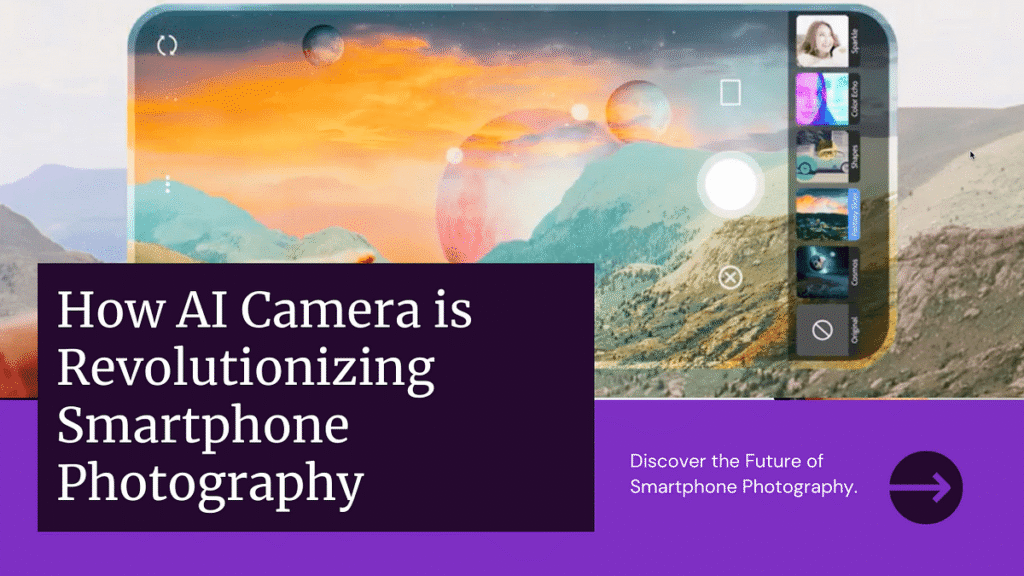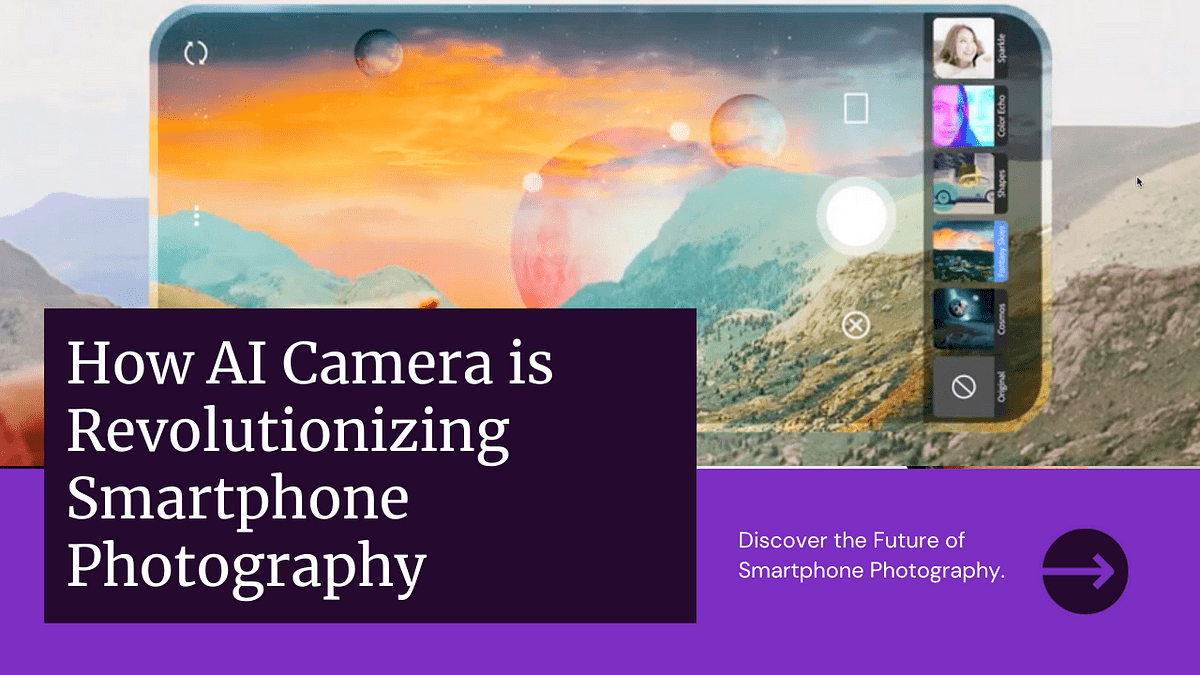How often do we find ourselves snapping pictures with our phones, hoping to capture that perfect moment? We want our memories to be as vibrant and clear as possible, but what really goes into making our photos look great? More importantly, how does artificial intelligence (AI) play a role in enhancing the quality of those snapshots? Let’s unpack this together.

Understanding Photo Quality
Before we get into the nitty-gritty of how AI improves photo quality, it’s essential to understand what we mean by “photo quality.” At its core, photo quality encompasses several elements: sharpness, color accuracy, contrast, and noise. Each of these components contributes to the overall feel of the image. When we take a picture, we want it to look as close to what we see with our eyes as possible.
The Elements of Photo Quality
Let’s break down the elements of photo quality to see how they affect the images we take:
| Element | Description |
|---|---|
| Sharpness | Refers to the clarity of the image; how detailed and defined the subject appears. |
| Color Accuracy | The degree to which colors in the photo mirror real life; we love when greens look like greens! |
| Contrast | The difference between the light and dark parts of an image; good contrast helps subjects stand out. |
| Noise | The presence of graininess or distortion in photos; we often notice noise in low-light conditions, making our images less appealing. |
Each of these factors plays a role in defining our images’ overall impact, and we often rely on our phone’s camera technology to get it right.
The Role of AI in Photography
Artificial intelligence has emerged as a powerful tool across many industries, and photography is no exception. So, how does AI come into play? In essence, it analyzes images and helps in optimizing them for clarity, color balance, and overall aesthetics. Let’s examine how AI improves each component of photo quality we discussed earlier.
Enhancing Sharpness
When we snap a photo, particularly in challenging conditions like low light or fast motion, sharpness can be compromised. AI uses algorithms to analyze the image and apply sharpening techniques intelligently. Instead of simply enhancing every detail, it focuses on edges and important features, ensuring the photo appears clear without introducing unwanted artifacts.
How AI Achieves This
-
Image Segmentation: AI can identify different areas within a photo, such as the background and foreground. By focusing sharpening efforts on the subject, it ensures we achieve that desired crispness without damaging other areas.
-
De-noising Algorithms: In low-light situations, photos often get grainy. AI can reduce the noise while preserving essential details, so we end up with a photo that is both sharp and clean.
Enhancing Color Accuracy
We all know that colors can sometimes appear different in photographs compared to what we see. Whether it’s a sunset that looks too orange or a dress that appears blue under certain light, AI helps in correcting these inaccuracies.
Color Correction Techniques
-
White Balance Adjustment: AI evaluates the lighting in a photo and adjusts the color tones to reflect what they should look like in natural conditions. This makes images more true to life, which is something we all appreciate.
-
Color Enhancement Algorithms: These algorithms can automatically boost colors in an image based on learned color distributions. So, if the greens in our nature photos look washed out, AI can enhance them without making the image look artificial.
Improving Contrast
Contrast can sometimes be a tricky balance. Too much contrast can lose details in the highlights or shadows, while too little can make everything look flat. AI measures these elements and adjusts them for better representation.
Techniques for Improving Contrast
-
Dynamic Range Optimization: AI improves the dynamic range of an image by intelligently brightening darker areas while ensuring highlights are not overexposed. This gives our photos more depth.
-
Local Contrast Enhancement: Instead of applying contrast evenly throughout the image, AI can enhance contrast based on local features, ensuring important details are highlighted without losing texture.
Reduction of Noise
We’ve likely all experienced the curse of grainy photos, especially those taken at night or indoors. Noise can detract from the quality of our images significantly. Thankfully, AI technologies are constantly improving how noise is handled.
Advanced Noise Reduction
-
Machine Learning Models: AI uses extensive datasets of images to train models on what constitutes noise versus detail. It can effectively distinguish between the two, allowing it to minimize noise while retaining important features.
-
Frequency Separation Techniques: By applying different processing techniques to various frequency layers of an image, AI can reduce low-frequency noise (the graininess) while preserving high-frequency details (the sharp features).

AI-Driven Camera Features
Now that we’ve explored how AI can improve various aspects of photo quality, let’s look at some specific AI-driven features in smartphones that contribute to better overall photography experiences.
Portrait Mode
One of the most beloved features in many smartphones today is Portrait Mode. This mode allows us to take stunning photos with a beautiful depth-of-field effect, where the subject is in sharp focus while the background is beautifully blurred (bokeh effect).
In traditional photography, achieving this effect requires specific equipment and techniques. However, AI makes it possible with just our phones by:
-
Identifying Subjects: AI algorithms can distinguish between subjects and backgrounds, allowing for precise focus adjustments.
-
Simulating Depth Effects: By analyzing the layers of an image, AI can create a depth map and apply blur effects in a way that feels natural.
Night Mode
Have we ever tried to take a photo in low light only to end up with a blurry, noisy mess? Thankfully, AI-powered Night Mode in smartphones has transformed nighttime photography.
This feature works by:
-
Stacking Multiple Exposures: Night Mode takes multiple images at different exposure levels and merges them together to form a brighter, clearer image.
-
Enhancing Details While Reducing Noise: The AI optimizes light and detail across the images to ensure we get the best possible shot, resulting in vivid nighttime photos.
Scene Recognition
We’ve all been there: we want to capture the perfect moment, but we’re unsure of the best settings. Enter AI-driven Scene Recognition, which automatically adjusts camera settings based on the detected scene.
-
Identifying Settings: AI can recognize scenes like landscapes, portraits, or food and adjust settings accordingly, ensuring our photos come out beautifully without needing to fiddle with the settings.
-
Real-Time Adjustments: As we shift our focus, AI continues to adapt, ensuring we get the best shot possible, regardless of changes in lighting or the scene itself.
Image Enhancement Options
When we take a photo, we might want to do some minor editing before sharing it with friends. Many smartphones offer AI-powered enhancement options that help us make quick but effective adjustments.
-
One-Tap Enhancements: This feature uses AI to analyze a photo and make automatic adjustments, making it easy for us to enhance our images with a single tap.
-
Smart Filters and Effects: AI can suggest filters that will complement a photo based on its content and color palette, helping us achieve a specific tone or mood.

The Future of AI in Photography
As we look to the future, it’s clear that the integration of AI in our smartphones is only going to become more sophisticated. The possibilities are exciting and could fundamentally change how we take and perceive photos.
Advanced Editing Capabilities
Imagine AI that can edit images similar to professional photographers. We might see enhanced object removal, where unwanted elements can be seamlessly erased, or improved background replacements that look incredibly natural.
Real-Time Collaboration
We could potentially collaborate on images in real-time with AI, where suggestions for angles, framing, or post-processing techniques are tailored based on our shared preferences.
Hyper-Personalization
In the not-so-distant future, smart cameras may even understand our individual preferences in photo style, automatically adjusting based on what we’ve edited previously or how we’ve tagged our favorite shots in our albums.
Conclusion
As we’ve journeyed through the world of AI and its impact on photo quality, it’s clear to see that technology is continuously evolving and revolutionizing photography. We can take comfort in knowing that our smartphones are helping us capture memories in striking detail, bringing our creative visions to life.
From enhancing sharpness and colors to offering innovative features like Night Mode and Portrait Mode, AI is here to help us create images that resonate, reflect, and inspire—just as we desire. With that, we can look forward to the possibilities ahead, excited about the clarity, depth, and emotion our photos will hold in the future.
So, the next time we pull out our phones to snap a photo, let’s appreciate the AI that works tirelessly behind the scenes, making our memories beautiful and unforgettable.



